Business Environment | NABARD Grade A & Grade B Preparation - Bank Exams PDF Download
Introduction
Business environment can be defined as those forces, individuals and institutions that have the ability to influence the working of an organisation.
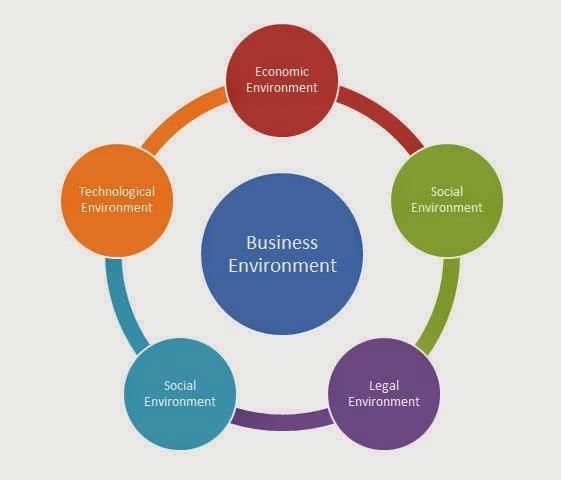
Features of Business Environment
(a) Totality of external forces: Business environment is the total of all the forces/factors external to a business firm.
(b) Specific and general forces: The Business environment includes both specific and general forces. Specific forces include investors, competitors, customers, etc., who influence a business firm directly, while general forces include social, political, economic, legal and technological conditions which affect a business firm indirectly.
(c) Interrelatedness: All the forces/factors of a business environment are closely interrelated. For example, increased awareness of health care has raised the demand for organic food and roasted snacks.
(d) Dynamic: Business environment is dynamic, which keeps on changing with the change in technology, consumers’ fashion and tastes, etc.
(e) Uncertainty: The Business environment is uncertain as it is difficult to predict future environmental changes and their impact with full accuracy.
(f) Complexity: The Business environment is complex, which is easy to understand in parts separately, but it is difficult to understand in totality.
(g) Relativity: Business environment is a relative concept whose impact differs from country to country, region to region and firm to firm. For example, a shift of preference from soft drinks to juices will be welcomed as an opportunity by juice-making companies, while posing a threat to soft drink manufacturers.
Importance of Business Environment
(a) Identification of opportunities to get first mover advantage: Understanding of the business environment helps an organisation in identifying advantageous opportunities and getting their benefits prior to competitors, thus reaping the benefits of being a pioneer.
(b) Identification of threats: Correct knowledge of the business environment helps an organisation to identify those threats which may adversely affect its operations. For example, Bajaj Auto made considerable improvements in its two-wheelers when Honda & other companies entered the auto industry.
(c) Tapping useful resources: The Business environment makes available various resources such as capital, labour, machines, raw material, etc., to a business firm. To know the availability of resources and make them available on time at an economical price,
(d) Coping with rapid changes: Continuous study/scanning of the business environment helps in knowing the changes which are taking place, and thus they can be faced effectively.
(e) Assistance in planning and policy formulation: Understanding and analysis of the business environment helps an organisation in planning &policy formulation. For example, ITC Hotels planned new hotels in India after observing a boom in the tourism sector.
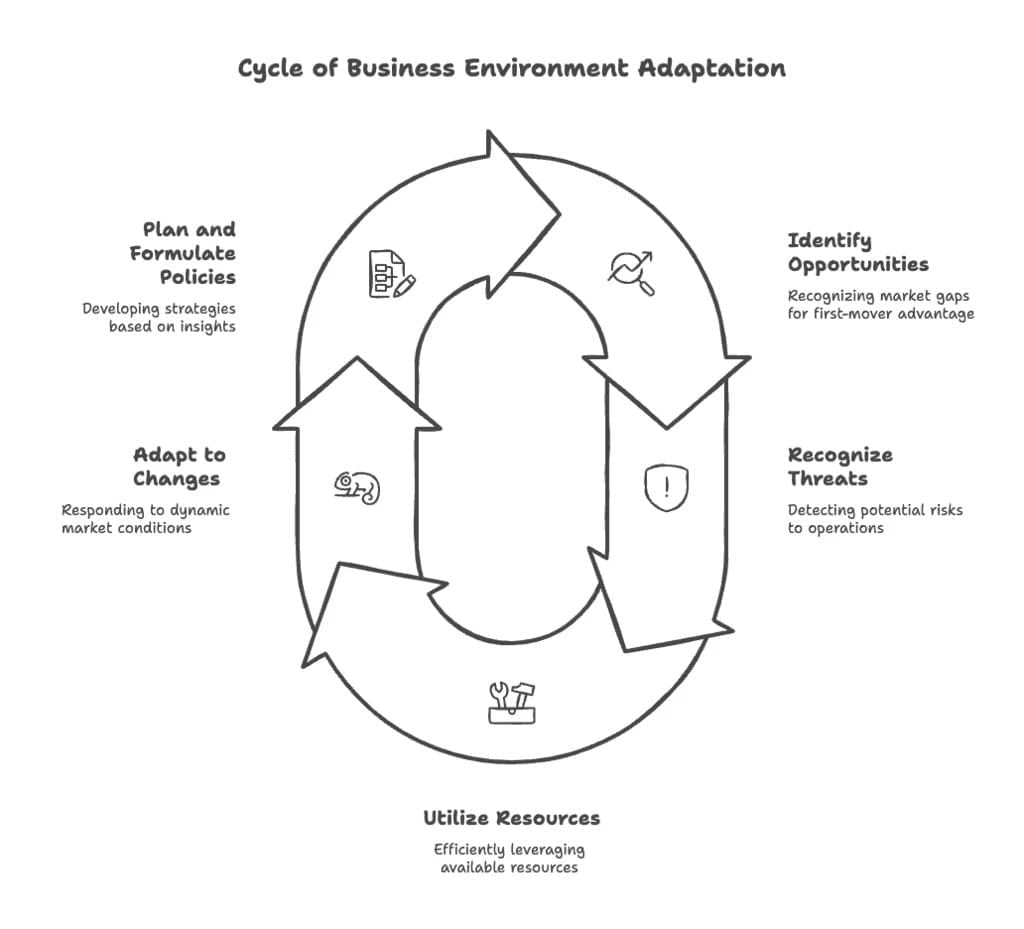
Helps in improving performance: Correct analysis and continuous monitoring of the business environment help an organisation in improving its performance.
Economic Environment in India: As a part of economic reforms, the Government of India announced the New Economic Policy in July 1991 to take the country out of economic difficulty and speed up the development of the country.
Dimensions/Components of Business Environment
(a) Economic Environment: It has an immediate and direct economic impact on a business. Rate of interest, inflation rate, change in the income of people, monetary policy, price level, etc., are some economic factors which could affect business firms. The economic environment may offer opportunities to a firm, or it may impose constraints.
(b) Social Environment: It includes various social forces such as customs, beliefs, literacy rate, educational levels, lifestyle, values, etc. Changes in the social environment affect an organisation in the long run. Example: Nowadays people are paying more attention towards their health, as a result of which demand for mineral water, Diet Coke, etc. has increased while demand for tobacco, fatty food products has decreased.
(c) Technological Environment: It provides new and advanced ways/techniques of production. A businessman must closely monitor the technological changes taking place in the industry, as it helps in facing competition and improving the quality of the product.
For Example, Digital watches in place of traditional watches, artificial fabrics in place of traditional cotton and silk fabrics, booking of railway tickets on the internet, etc.
(d) Political Environment: Changes in the political situation also affect business organisations. Political stability builds confidence among the business community, while political instability and a bad law & order situation may bring uncertainty in business activities. Ideology of the political party, attitude of the government towards business, and type of government- single party or coalition government affect the business. Example: Bangalore and Hyderabad have become the most popular locations for IT due to their supportive political climate.
(e) Legal Environment: It constitutes the laws and legislations passed by the Government, administrative orders, court judgements, decisions of various commissions and agencies. Businessmen have to act according to various legislations, and their knowledge is very necessary. Example: Advertisement of Alcoholic products is prohibited, and it is compulsory to give a statutory warning on the advertisement of cigarettes.
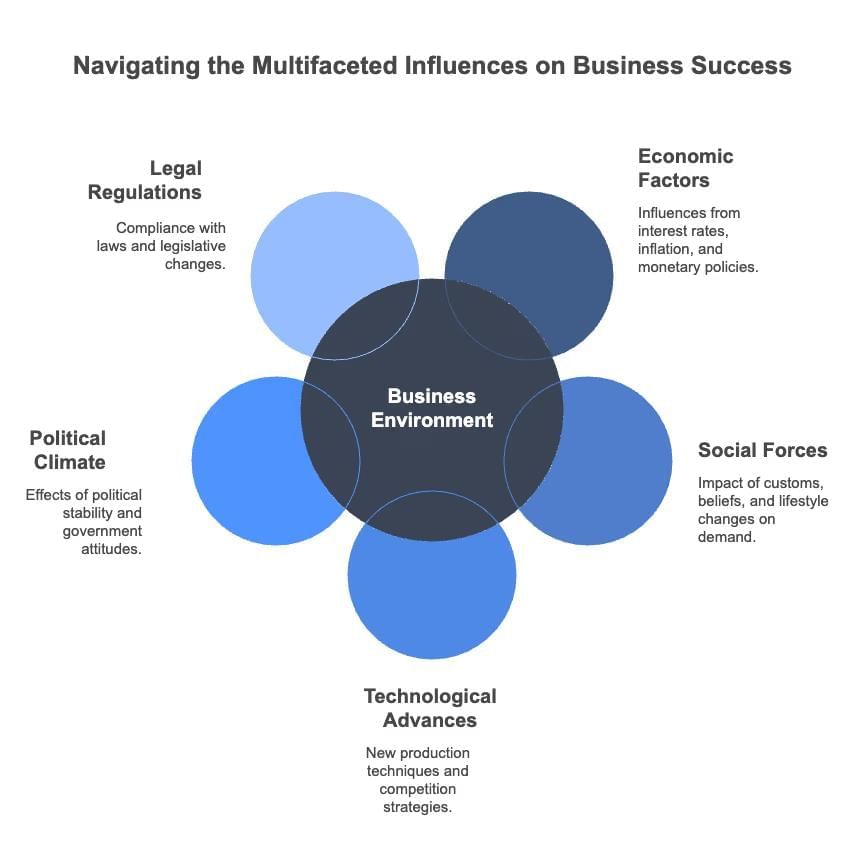
Economic Environment in India
- Only six industries were kept under the licensing scheme.
- The role of the public sector was limited to four industries.
- Disinvestment was carried out in many public sector enterprises.
- Foreign capital/investment policy was liberalised, and in many sectors100% direct foreign investment was allowed.
- Automatic permission was given for signing technology agreements with foreign companies.
- Foreign Investment Promotion Board (FIPB) was set up to promote & bring foreign investment in India.
- Various benefits were offered to small-scale industries.
The main objective of the New Industrial Policy was to promote Liberalisation, Privatisation and Globalisation.
(a) Liberalisation: It means freeing Indian Industry from all unnecessary government controls and restrictions. Abolishing licensing requirements; Freedom in deciding the scale of business; removal of restrictions on movements of goods and services; reduction in tax rates; freedom in fixing prices; simplifying procedures; making it easier to attract foreign investment.
(b) Privatisation: Giving a greater role to the private sector in the nation-building process and reducing the role of the public sector; Disinvestment in many Public Sector undertakings, etc., Setting up of BIFR to revive sick units in public sector enterprises suffering losses. It aimed at improving the efficiency and performance of government undertakings, reducing the budgetary deficit & better utilisation of national resources.
(c) Globalisation: It means the integration of various economies of the world, leading to the emergence of a cohesive global economy. The measures taken by the Government include trade liberalisation, which includes import liberalisation; Export Promotion through rationalisation of tariff structure; Foreign exchange liberalisation; increased interaction among global economies under the aegis(protection/support) of the World Trade Organisation. It resulted in the addition of Export duty and the reduction of imports.
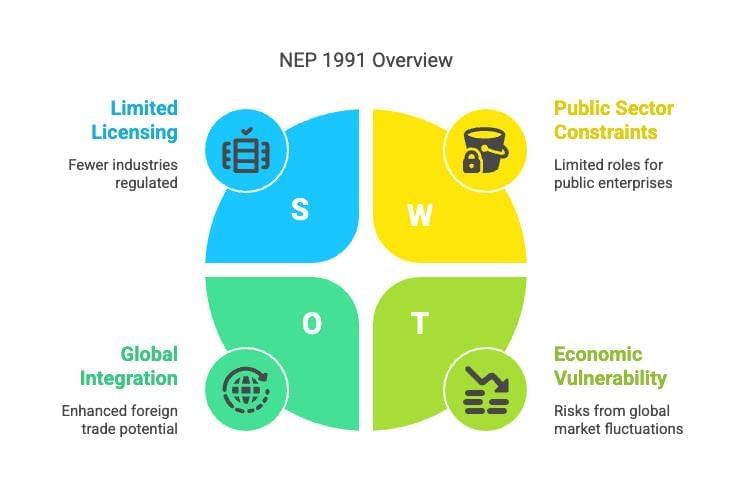
Early Crisis Met: Reform Measures
- Fiscal Correction: Aimed at reducing the fiscal deficit by approximately Rs. 7,700 crore in 1991-92 compared to the previous year.
- New Industrial Policy: Announced in July 1991 to deregulate the industry and promote a more competitive and efficient industrial economy.
- Abolition of Industrial Licensing: Industrial licensing was abolished for all projects except 18 industries of high strategic and environmental importance. About 80% of industries were delicensed.
- Amendment of the MRTP Act: Eliminated the need for prior government approval for capacity expansion, diversification, and mergers by large companies.
- Opening of Core Industries: Nine areas in basic and core industries previously reserved for the public sector were opened to the private sector.
- Increase in Foreign Equity Holding: Raised from 40% to 51% in a wide range of priority industries.
- Establishment of the FIPB: The Foreign Investment Promotion Board was set up to negotiate and expedite investment proposals from large international firms.
- Rupee Devaluation: The rupee was devalued by 18% in July 1991, supported by a standby credit of $2.3 billion from the IMF.
- Negotiation of Loans:. $500 million Structural Adjustment Loan from the World Bank and a loan from the IMF were negotiated during 1991-92.
- India Development Bond Scheme: Introduced to mobilise funds held abroad, raising over $2 billion during 1991-92.
- Repatriation of Gold: Gold pledged to the Bank of England and the Bank of Japan was brought back.
- Continuance of Import Control and Credit Squeeze: Measures to control imports and tighten credit were continued.
- Introduction of Eximscrips: Administered licensing of imports was replaced by freely tradable import entitlements linked to export earnings.
- Liberalised Exchange Rate Management System (LERMS): A dual exchange rate system was established, with one rate effectively floated.
- Simplification of Import Licensing: Import licensing for most capital goods, raw materials, intermediates, and components was eliminated, and the Advance Licensing System was simplified.
These initial measures set the foundation for future economic reforms and were continued as part of the ongoing reform process.
Demonitisation
The Indian government made a significant announcement on November 8, 2016, when it decided to demonetise the two largest currency notes, ₹500 and ₹1,000. This move had a major impact on the Indian economy.
The demonetisation meant that these high-denomination notes were no longer considered legal tender, except for certain specific purposes like paying utility bills. As a result, 86% of the money in circulation became invalid almost overnight. People were required to deposit these invalid notes into banks, which came with restrictions on cash withdrawals. This action effectively limited the convertibility of domestic currency and bank deposits.
The primary goals of demonetisation were to combat corruption, counterfeit currency, and the use of high-denomination notes for illegal activities. It was particularly aimed at tackling the accumulation of "black money," which is income not declared to tax authorities.
Features of Demonetisation
- Tax Administration Measure: Demonetisation is seen as a way to improve tax administration. People with declared income could easily deposit their cash in banks and exchange it for new notes. However, those with black money had to declare their unaccounted wealth and pay taxes at a higher penalty rate.
- Shift in Government Stance: Demonetisation signalled the government's serious stance against tax evasion. It indicated that such practices would no longer be tolerated or accepted.
- Channelling Savings into the Formal System: Demonetisation aimed to channel savings into the formal financial system. While much of the deposited cash might be withdrawn later, some new deposit schemes offered by banks would provide a base for loans at lower interest rates.
- Move Towards a Less-Cash Economy: Another goal was to create a less-cash or cash-lite economy. This involved increasing savings through the formal financial system and improving tax compliance. Although there were challenges, such as the need for internet connectivity for digital transactions, the move was seen as a way to bring more people into the formal economy, enhance financial savings, and reduce tax evasion.
Impact of Government Policy Changes on Business and Industry
(a) Increasing Competition: De-licensing and entry of foreign firms’s Indian market has increased the level of competition for Indian firms.
(b) More Demanding Customers: Now, customers are more aware and they keep maximum information of the market as the result of which now market is customer/buyer oriented. Now, products are produced keeping in mind the demands of the customers.
(c) Rapid Changing Technological Environment: Rapid Technological advancement has changed/improved the production process, as a result of which maximum production is possible at minimum cost, but it leads to tough challenges in front of small firms.
(d) Necessity for Change- After the New Industrial Policy, the market forces (demand & supply) are changing at a very fast rate. Change in the various components of the business environment has made it necessary for the business firms to modify their policies & operations from time to time.
(e) Need for Developing Human Resources: The changing market conditions of today require people with higher competence and greater commitment; hence, there is a need for developing human resources, which could increase their effectiveness and efficiency.
(f) Market Orientation: The Earlier selling concept was famous in the market, now its place is taken by the marketing concept. Today, firms produce those goods & services which are required by the customers. Marketing research, educational advertising, and sales services have become more significant.
(g) Reduction in budgetary Support to the Public Sector: The budgetary support given by the government to the public sector is reducing, thus the public sector has to survive and grow by utilising its own resources efficiently.
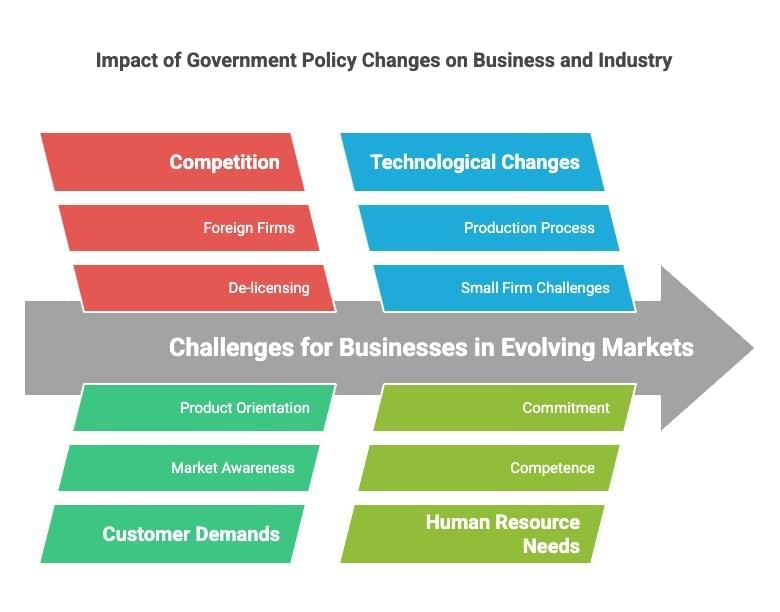
|
940 videos|1436 docs|435 tests
|















